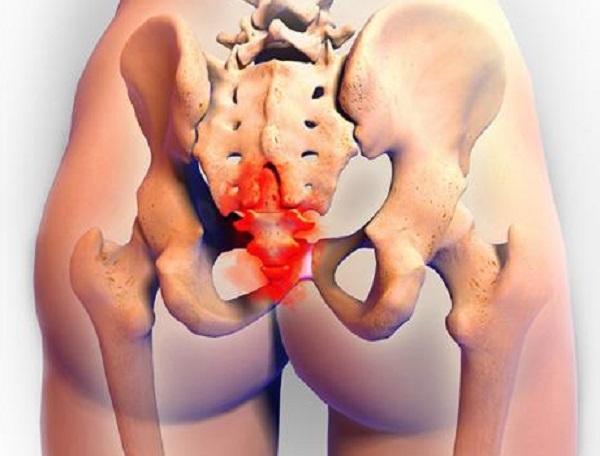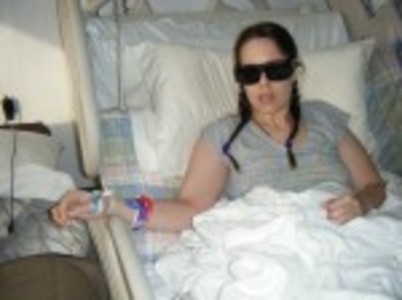I am the mother of my precious little girl Alisa (pictured). Though she is not little anymore, she will always be my princess. Alisa grew up healthy, active, and happy. She enjoyed trying new things and being around others. She loved photography, fishing, bike riding, boating, hiking, martial arts, music (especially her violin), and all types of animals. In high school she enjoyed her photography in which she won awards for. She was a tattoo assistant for a Washington State award winning tattoo artist and was learning the trade. She was on the swim team and loved swimming. Being a concerned mother I was fearful for her getting cervical cancer. We were being bombarded with commercials and ads for this vaccine for girls to be one less. When they offered the vaccine to my daughter I said sure. They never went over side effects or problems, so I figured it was a safe one. That day is when our nightmare began.
August 14, 2007, the first vaccine shot ( lot # 0384U) – Alisa went home with her injection site itchy, swollen, red, and sore. She was not feeling well, like flu. I sent her to bed and she was home sick for a couple days. The doctors office said that was normal. I did notice she was complaining about sore joints and muscles in the months to follow and she was napping more with headaches. I just blamed it on growing pains.
November 14, 2007, second vaccine shot (lot # 0927U) – Alisa was not thrilled about having the shot again. She was so scared she was going to feel crummy again. Sure enough the injection site was itchy, sore, red and this time the area swelled up a large area. She went home and went to bed. She was out of school again down with flu like symptoms for days. Slowly she came out of her slump but was so sore throughout her body. Sore muscles and joints, complained of headaches. She was exhausted all the time. It was difficult for her to muster the strength to do things. She took to her computer and was playing games online with friends.
Happy Valentines Day to you….February 14, 2008 (lot# 12APR10). This time she was flat terrified and cried all the way to the doctors begging me not to make her get the vaccine. This breaks my heart because I remember this day too vividly. I kept telling her it was the last shot and we don’t want to make the other two shots go without the final one. I kept telling her it was for the best. We left the office and she was throwing up, shaking, feverish, and the usual symptoms of sore muscles and joints, a pounding headache, exhaustion. She was down for over a week recouping from the shot.
After the 3 shots I put the series out of my mind. The only time that I remember the shots was EVERY visit to the hospitals and Dr.s offices, when they would ask if Alisa had all her vaccines. EVERY time I answered I said, “yes she has even had the Gardasil series.” Not one doctor put this together. The cause to her illnesses were put together by good friends of the family.
Many of you may wonder why I continued taking her in for the vaccine series. I called the doctor’s office about her reactions each time, and they said it was completely normal to have those “minor” reactions: swelling, itching, light headed, and dizzy. After all it is a shot!!!! They also said at the doctor’s office, NO ONE has ever had the flu like symptoms from the vaccine, so she must have a touch of the flu. When the third dose came around they stressed to us that the other two shots of the vaccine would have been useless without the third. I trusted our family doctor of 15 years. He had never steered us wrong and always took care of us – treated us honestly and fair. I grew up with my grandfather being a doctor and most of my aunts being RN’s, I worked in the medical community. I trusted them….It never dawned on me they could be wrong.
Alisa continued on with her life but lost some of her spunkiness. She no longer had tons of energy. She slept a bunch, stopped her swim team, and spent more time in her room on the computer. She said her body hurt and didn’t feel like doing anything.
There are so many doctors appointments and hospital visits in this time frame. I have requested all her records from the hospitals, clinics, and her primary care provider (he has discharged her from his office).
October 2009, another visit to the emergency department with eye problems. She was having bloody discharge and pressure behind her right eye. Alisa was having problems with slurred speech, headache and facial droop. They accounted it to pink eye and we begin treatment. They recommend we contact a neurologist and see the doctor.
After seeing the neurologist finally we were sent home with the idea of further testing later. Later that night the neurologist called recommending we take her back to the hospital for further testing. October 2009, off to the hospital again. By this time, Alisa was admitted into children’s hospital with the following symptoms: Bells Palsy, migraine, right sided weakness, blurry vision, tinnitus, balance problems, numbness right side, unable to walk, problems swallowing, fatigue, joint pain, difficulty in opening mouth. They were testing for stroke and other unknown causes to this problem. She endured CAT scans, MRI’s, Lumbar punches. Over the next week she continued to get worse. Of course the psychiatric doctors were sent in to ensure she wasn’t an abuse victim. We didn’t know yet then she was abused by the pharmaceutical company. She was discharged without a cause to the problem.
This was Alisa’s senior year in high school, though the first semester she was in the hospital and a tutor came in a few times a week to drop off and pick up homework. The doctors released her to return to school but the noises, medications, and lights caused her headaches to pound and she was struggling with anxiety issues. With only one semester until graduation she dropped out of school. It was too much to handle. (She tested and passed her GED in Dec. 2011).
Over the following years Alisa has had this happen 2 more times. Right side paralysis, wheelchair, learn to walk with a walker again, and now she gets so exhausted she uses the wheelchair to save her energy.
Her side effects seem to increase in intensity and keep adding in numbers. So far she struggles with the following issues: leaky gut syndrome, pins and needles in extremities, dizziness, bleeding gums, toothaches/teeth changes, brain fog, sensitivity to chemicals, chest pains, constipation, dehydration, enlarged liver, sound sensitivity w/anxiety, extreme pain in the tailbone area, fainting, fever and blisters, fibromyalgia, Guillain-Barre syndrome, autistic-like symptoms, hand/leg weakness, back pain, hot//cold intolerance, trouble sleeping, itching, joint pain, knee pain, light sensitivity, blindness, depression, personality changes, anxiety/panic attacks, loss of bladder control, bladder issues, muscle aches and spasms, muscle tension, tumor, paleness, chronic fatigue syndrome, paralysis, pneumonia, severe nerve pain, shortness of breath, slurred speech, smell sensitivity, diarrhea, sore throat, stomach pain, swelling/edema, tremors hand and/or leg, random twitching of extremities, bloating, uterine spasms, hair loss, urinary tract infections (UTI), kidney issues, vision loss (temporary/permanent), vision problems, dyslexia, hallucinations, vomiting blood, stomach ache, nausea, rashes, appetite loss, weight gain or loss ( 20-30lbs).
Alisa is unable to anything without supervision. Showering requires a shower chair. She has to be checked on constantly since her seizures come without notice. She becomes so disoriented after some of the seizures, she wanders off.
Alisa was once firm in her beliefs about anti-smoking and drug use, but has now become a medical marijuana patient. This is the only thing that takes an edge off the pain. She is never pain free but the MMJ makes it more tolerable. Unfortunately this pain relief isn’t covered by medical insurance so the $1200.00 a month pain control comes out of the pocket book.
This vaccine has dramatically changed our family’s life. Alisa fights for her life everyday. It is even more difficult to not be able to help her or find a cure for her symptoms. It is heartbreaking to watch your child suffer in horrible pain and not be able to help. I feel guilty because my child is suffering because of a choice I made. A choice I thought was to help her and instead has disabled her. I wish someone would have told me. Please help spread the word about this vaccine. Tell everyone you know about the dangers of the vaccine. Educate before you vaccinate. This vaccine is harming thousands of girls, and now boys. The vaccine needs to be taken off the market. The numbers of children affected is rising everyday.
Participate in Research
Hormones MatterTM is conducting research on the side effects and adverse events associated with Gardasil and its counterpart Cervarix. If you or your daughter has had either HPV vaccine, please take this important survey. The Gardasil Cervarix HPV Vaccine Survey.
To take one of our other Real Women. Real Data.TM surveys, click here.
To sign up for our newsletter and receive weekly updates on the latest research news, click here.

















